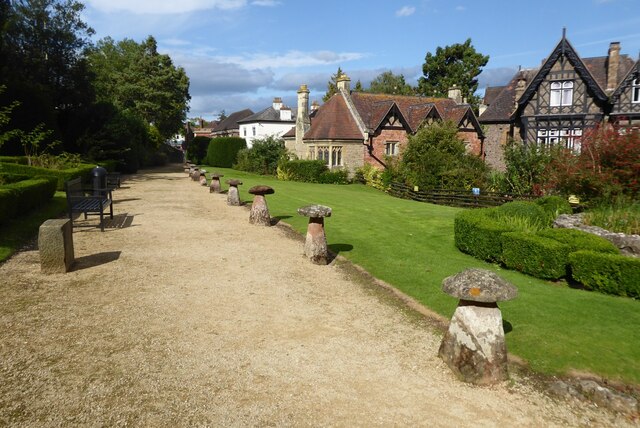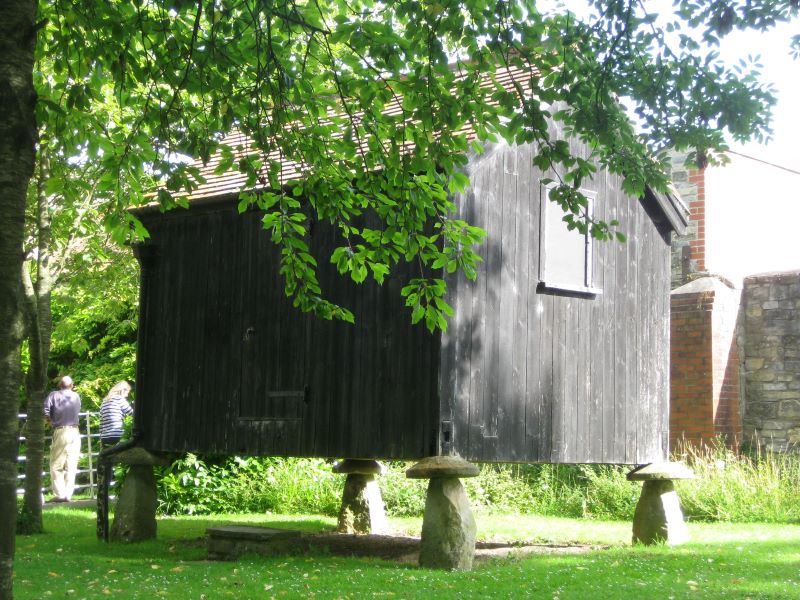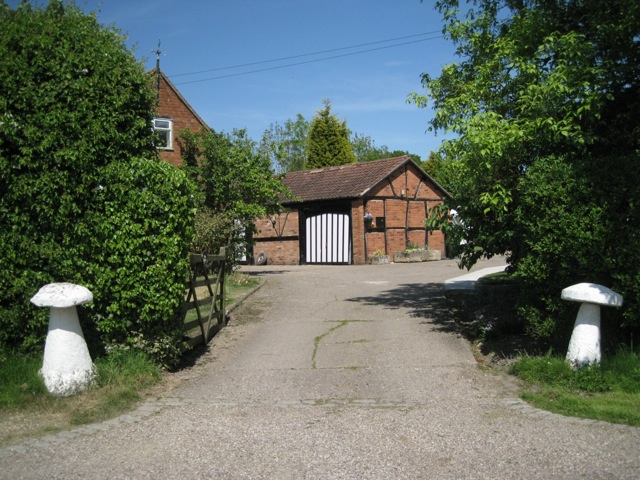Staddle stones originated in the Middle Ages as wooden supports to barns and granaries. The Old English ‘Stathel’, meaning foundation, support or trunk of tree, became ‘Staddle’ by the 17th Century. This is when more durable stone versions became popular, hence staddle stone.
The staddle stone’s design varies around Britain, with round and square bases, and conical or domed caps. Caps are flat topped to accommodate wooden beams of the building above, and spread far wider than the supporting base. For such a simple structure, its design is very clever. Lifting the barns and granaries off the floor, staddle stones allows better air circulation, reducing the risk of spoiled grain and hay. At the same time, the ‘mushroom’ shaped cap prevents access by rodents, a sure fire way to lose crops.
By NotFromUtrecht – Own work, CC BY-SA 3.0, used under Creative Commons License.
Removable wooden steps, hung on the side of the building, further reduces rodent access. Alternatively, builders omitted the top step of stone-built steps, creating an approach that rodents can’t access.
With small granaries requiring a minimum of 5 staddle stones, makers were significant employers and provided a benefit to the local economy. This regionality extended to the type of stone used, as proximity to a quarry dictated what the maker could work with. As a result, staddle stones are available in a wide variety of different stones. This includes sandstone, Yorkstone, limestone and red sandstone.
A New Life
While still in use in parts of Britain and Europe, staddle stones fell out of favour in the 19th Century as improved crop storage was developed. This change, and the availability of faster, cheaper transport, diluted the regionality of staddle stones as they shipped all over the country.
Photo © Robin Stott (cc-by-sa/2.0)
Moving from farming function to garden feature, they carry the spirit of rural history into modern spaces. Their sculptural form and timeworn patina bring depth and character to gardens and landscapes. Homeowners and designers now use them as focal points in flower beds, informal seating, or even bases for sundials. In large properties, staddle stones make excellent driveway markers, and keep cars from parking on delicate verges.
Photo by Philip Halling used under Creative Commons Licence
Our selection of these rural relics continues to grow as we source from far and wide. The demand is growing and we do our best to accommodate our customers requirements, so please do get in touch!





